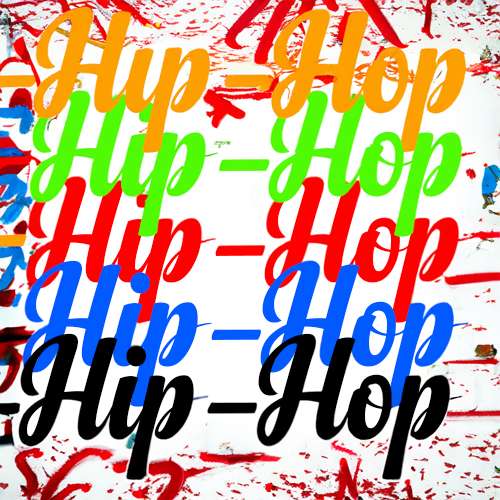
For the first time in three decades, the Hip-Hop genre has experienced a shift in its dominance on the music charts. While the genre has enjoyed immense popularity and success over the years, recent times have seen a decline in its number one songs and albums. In this article, we will explore the challenges that Hip-Hop faces in reclaiming its position at the top and suggest strategies to reignite its chart-topping reign.
Understanding the Problem:
One of the primary challenges faced by Hip-Hop is the saturation of the market. With an abundance of artists and an influx of new releases, it becomes increasingly difficult for individual songs or albums to stand out. This saturation can lead to a sense of stagnation, as listeners may feel overwhelmed by the volume of content and seek novelty in other genres. The tastes and preferences of music listeners are constantly evolving. While Hip-Hop has been at the forefront of popular culture for many years, there is a natural ebb and flow in music trends. Genres like pop, rock, and electronic music have made significant comebacks in recent years, attracting attention and challenging Hip-Hop’s chart dominance.
Another factor contributing to Hip-Hop’s struggle to maintain its position is a perceived lack of diversity and innovation within the genre. While there are exceptional artists pushing boundaries and experimenting with new sounds, there is also a risk of formulaic and repetitive music becoming the norm. This can lead to a decline in interest from both dedicated Hip-Hop fans and the broader music audience.
In recent times, there has been an observable trend within Hip-Hop, with an increasing number of artists incorporating death-related themes into their lyrics. These lyrics often touch upon subjects such as violence, drug abuse, and self-destructive behavior. While it is important to acknowledge that artists have the freedom to express themselves, the growing prominence of death lyrics has raised concerns among listeners, critics, and even within the Hip-Hop community itself.
As Hip-Hop continues to be a powerful medium for cultural expression, it carries a responsibility to be mindful of the messages it conveys. The prevalence of death lyrics can perpetuate negative stereotypes and contribute to the overall stigma associated with the genre. It becomes crucial to strike a balance between artistic freedom and social responsibility to maintain the integrity and positive impact of Hip-Hop.
Hip-Hop has a significant influence on young listeners who often look up to artists as role models. The proliferation of death-related lyrics can potentially glamorize destructive behavior, leading to negative real-life consequences. This concern is particularly relevant considering that Hip-Hop has a substantial following among impressionable youth. Artists and industry stakeholders must recognize the potential harm and take steps to promote healthier and more positive narratives.
Reclaiming the Top of the Charts:
To regain its chart-topping status, Hip-Hop can benefit from embracing musical fusion and collaborations with artists from diverse genres. By incorporating elements of pop, rock, electronic, or even classical music, Hip-Hop can create fresh and innovative sounds that appeal to a wider audience. Experimenting with new styles can help break the monotony and reinstate Hip-Hop’s relevance.
Hip-Hop has always been celebrated for its lyrical prowess and storytelling abilities. By placing a renewed focus on crafting thoughtful and impactful lyrics, artists can reconnect with their audience on a deeper level. Thought-provoking narratives, personal experiences, and socially conscious themes can resonate with listeners, making Hip-Hop songs stand out from the crowd.
To ensure the longevity of the genre, it is crucial to foster and promote emerging talent within Hip-Hop. Record labels, established artists, and industry influencers can play an active role in discovering and nurturing promising artists. Investing in artist development programs, providing mentorship, and creating platforms for exposure can rejuvenate the genre and bring fresh perspectives to the forefront.
While Hip-Hop may be experiencing a temporary decline in its number one songs and albums, there are several strategies that can help the genre reclaim its position at the top of the charts. By embracing musical fusion, elevating lyricism, utilizing digital platforms, and cultivating new talent, Hip-Hop can overcome the challenges it currently faces. As the genre continues to evolve and adapt, its ability to captivate audiences with its authenticity and creativity.
When it comes to the Hot 100 chart, hip-hop has seen a few contenders reach the Top 3, yet none have managed to reach the pinnacle. However, there have been several songs that came close, such as Lil Durk’s “All My Life” featuring J. Cole (reaching No. 2), Taylor Swift’s “Karma” featuring Ice Spice (reaching No. 2), Drake’s “Search & Rescue” (reaching No. 2), PinkPantheress’ “Boy’s A Liar, Pt. 2” featuring Ice Spice (reaching No. 3), and Ice Spice’s remix of “Princess Diana” with Nicki Minaj (reaching No. 4).
Nevertheless, there is still optimism that this dry spell will soon come to an end. The genre is eagerly awaiting new albums from renowned artists like Travis Scott, Future, Lil Wayne, Nicki Minaj, Kid Cudi, Post Malone, Lil Uzi Vert, Quavo, Offset, Playboi Carti, and more throughout the remainder of 2023. While many of these albums have a strong chance of reaching No. 1 on the Billboard 200, they are also likely to produce several contenders aiming for the top spot on the Hot 100 chart.








